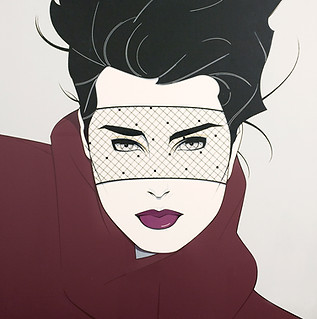Our pin-up and illustration art collection includes original works by Alberto Vargas, Patrick Nagel, and Hajime Sorayama. From a different time and place, each artist brought out the beauty and lushness of women in his own style with an immaculate technique. Click on the image to explore the timeless glamour of women portrayed by the highly acclaimed pin-up artists.
Warning: This Gallery contains some nudity and adult content that some people may find offensive.
Hajime Sorayama
HISTORY OF PIN-UP ART
The term "Pin-up" was first used in 1941. It referred to as the act of "pinning up" the art to the wall.
The origin of the Pin-up art goes back to the late 1800s and early 1900s, during the Golden Age of Illustration. The Gibson Girls by Charles Dana Gibson (American, 1867-1944) personifies early pin-up art during this period. During WWI (1914-1918), illustrations of stylized women on fashion magazines and postcards were extremely popular and used to enlist soldiers as well as to encourage morale on the front line.


Gibson Girls by Gibson
1

2

In the 1940s, unlike the earlier images of more demure women, pin-up girls appeared far more provocatively, and they are sexually more explicit.
During WWII (1939-1945), for the first time in its history, the US military unofficially sanctioned this kind of racy art. Pin-up pictures, magazines, and calendars were shipped and distributed among the troops, often at government expense, to "raise morale" and remind the young men what they were fighting for.
Pin-up by Vargas
The soldiers would carry illustrated images of beautiful women on postcards, calendars, or magazines. They adorned lonely servicemen's lockers, barracks’ walls, and even the sides of planes (Nose Art).
The hallmarks of pin-up art embodying images of beautiful women and eroticism are not to be confused with pornographic images. They were meant to be "pinned-up" and not hidden.

3
1: Propaganda poster for WWI designed by Howard Chandler Christy. King & McGaw. Digital image.
2: Gary M. Valant. Vintage Aircraft Nose Art: Ready for Duty. 1987. Motorbooks International, Osceola, WI.
3: Max Allan Collins. For The Boys: The Racy Pin-Ups of World War II. Collectors Press, Portland, Oregon.




















